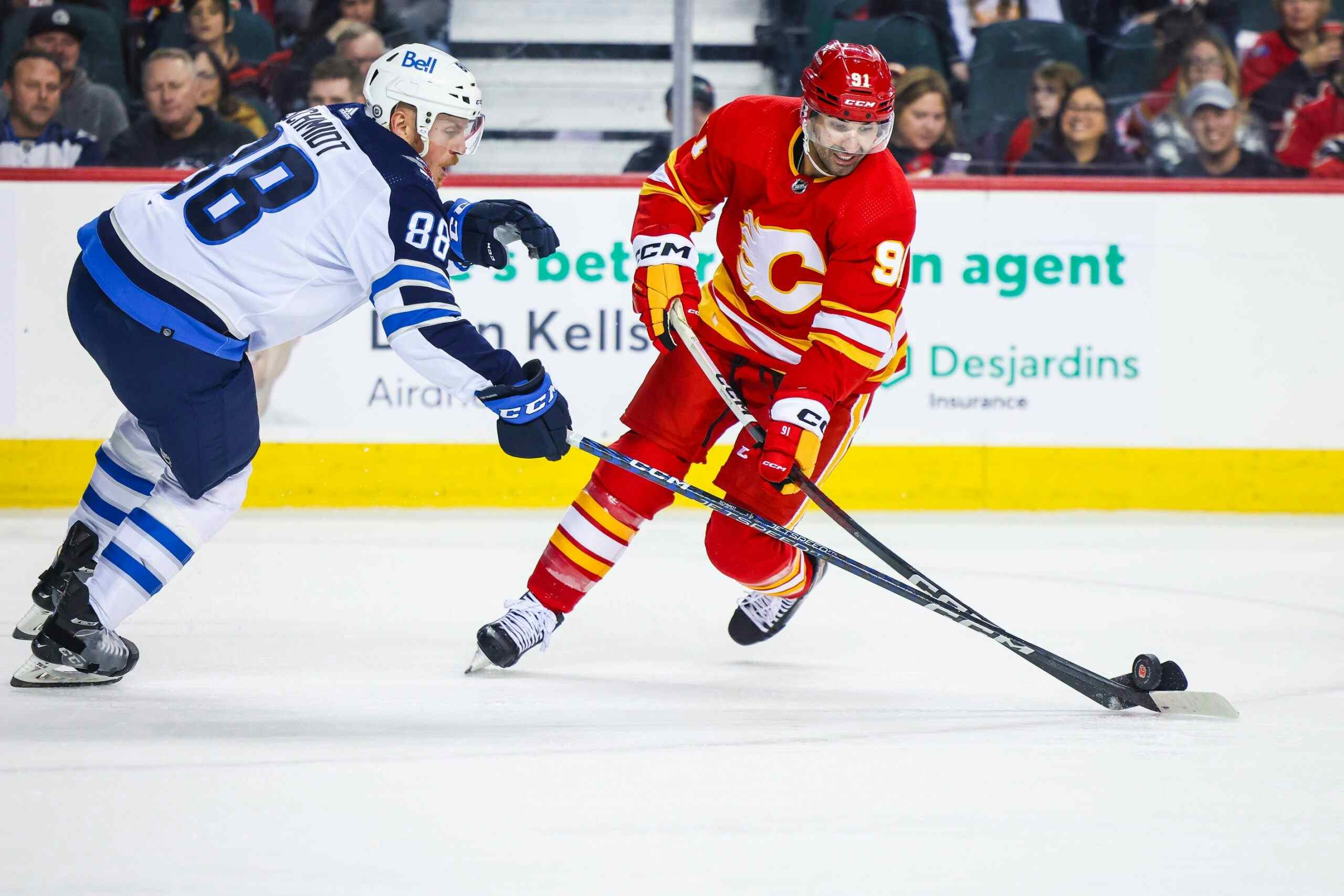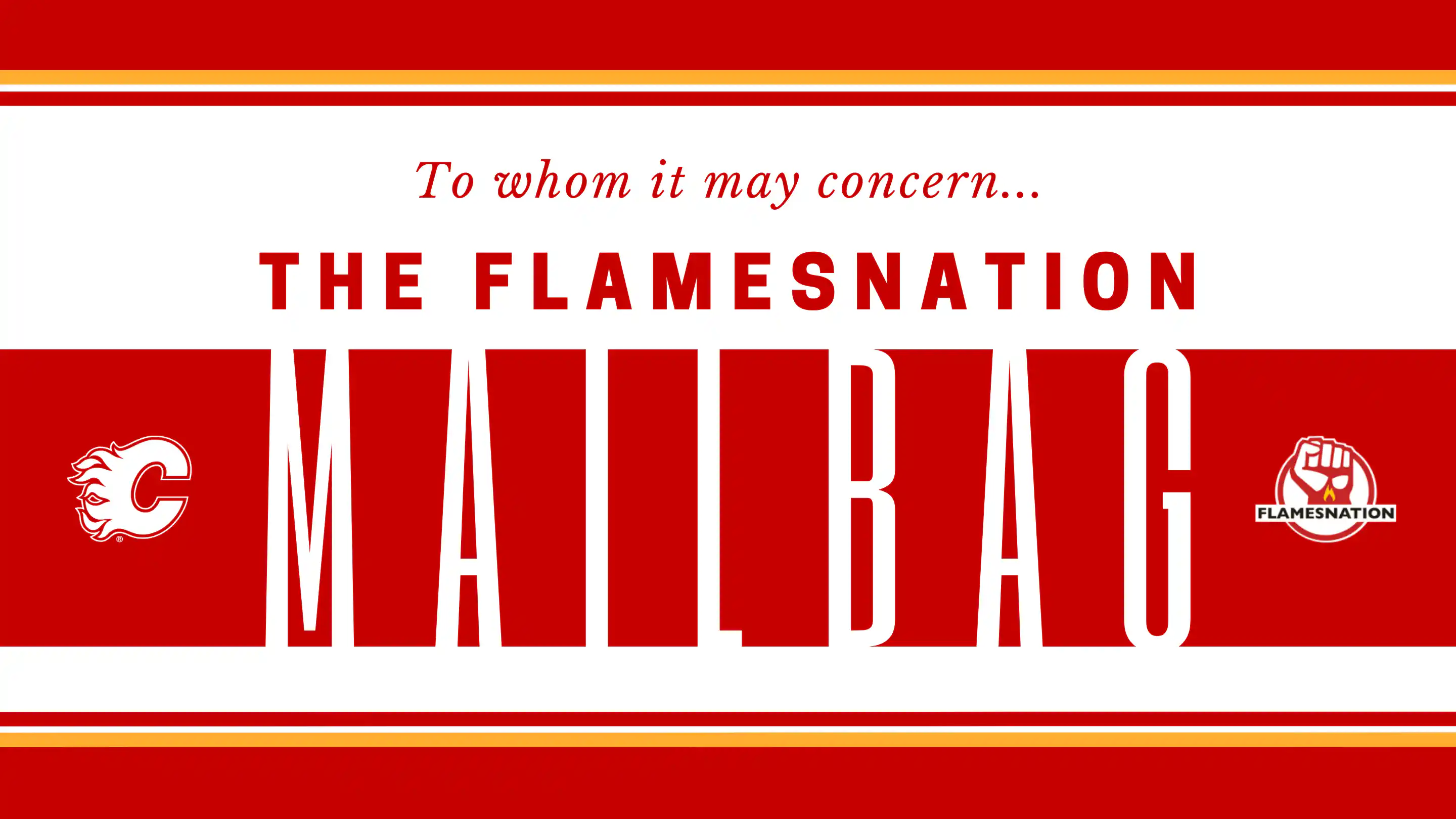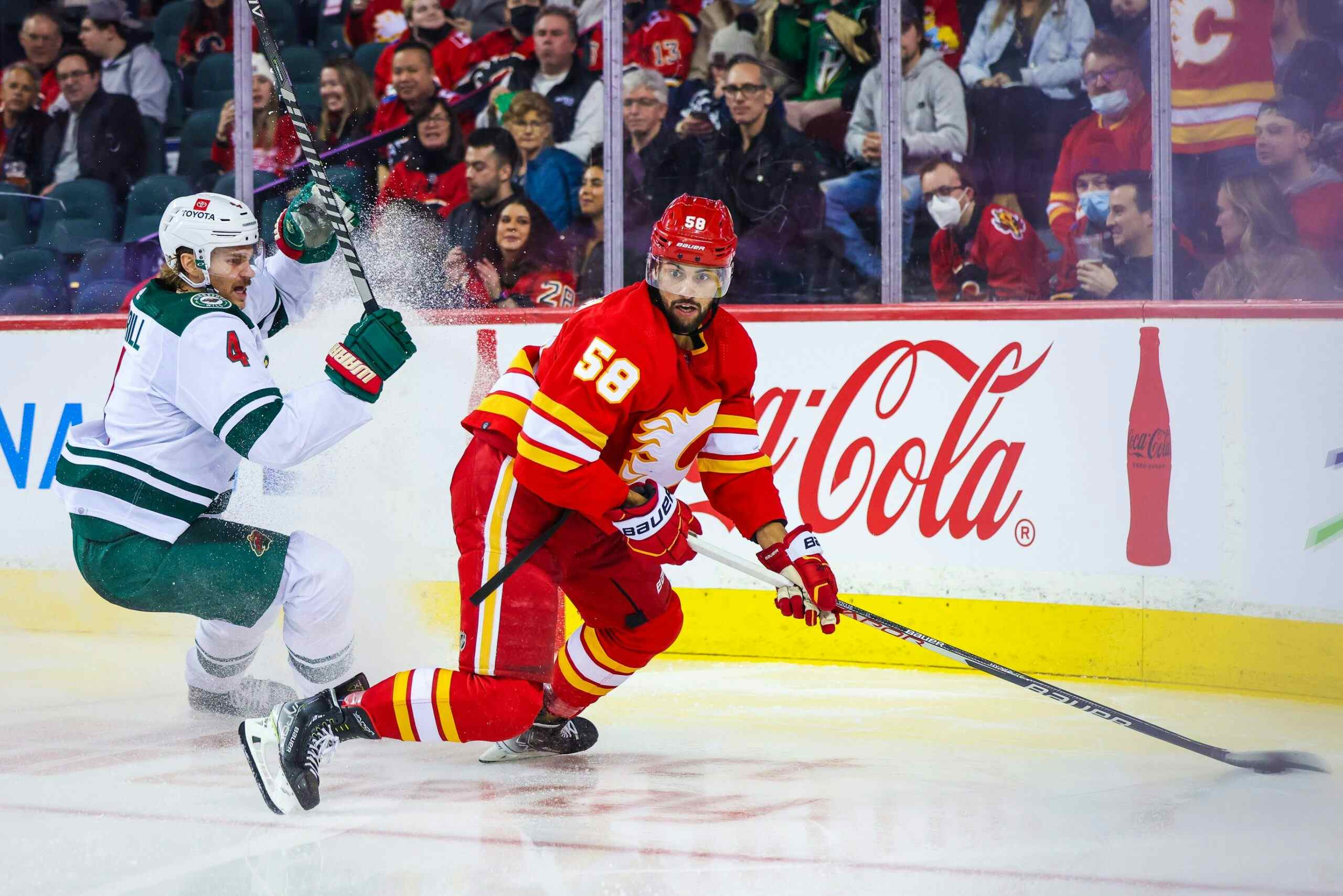Tax time! Evaluating the Flames Assets
By RexLibris
11 years ago
The Flames are going to rebuild. They are also going to focus on the draft, developing talent, attracting free-agents, making the playoffs next season, painting the house, learning Tagalog, and restarting the Middle East peace process. All while providing internet fan forums with wonderful management pop-psych phrases like "post-apex".
When embarking on any constructive venture the two key elements are to first define one’s end-goal, ideally one that is measurable in some fashion. The second is to identify the assets available to achieve that goal.
The goal we know: challenge for the playoffs in the 2013-2014 season.
The assets? Let’s take an objective look at what the Flames have that can be used to help them achieve that goal.
A quick note: some readers may disagree with my generalized ranking or grouping of some players listed. Fair enough, and I won’t argue too much about the relative value of player x or prospect y. We never know until that value is cashed in, but as a guideline I have tried to include factors such as contract length and value, age, performance, position and external league issues such as a declining salary cap and potential glut of free-agents following a period of amnesty buyouts.
I’m not suggesting that Jay Feaster trade all or even any of these items listed. Instead, look at it from the perspective of “this is how much of each thing the organization has, what might that be worth in addressing roster needs in order to achieve the end-goal of a playoff position”.
So let’s begin with the Flames’ NHL roster players, then prospects, picks and finally an asset that I refer to as a convergence of void.

The NHL Roster
To begin with, there are approximately three tiers of NHL player-assets.
The top tier, in my estimation, consists of Curtis Glencross, Mark Giordano, TJ Brodie, Mikael Backlund and Sven Baertschi. These are either established players who can provide an immediate benefit for another team or promising prospects who are going through the early growing pains of development. I honestly doubt Feaster moves any of these players as they ultimately serve the purpose the Flames are said to be pursuing.
The second tier would be veteran players such as Michael Cammalleri, Lee Stempniak, Jiri Hudler, Matt Stajan and Tim Jackman. These players either have a lower talent ceiling or have contracts that make their acquisition more than simply a playoff rental. There is a commitment owing here to the acquiring team that may reduce the return offered.
This is a more mixed-bag where some players have intrinsic value to a team looking to compete (Jackman and Stempniak) while the other, (Cammalleri) represents a sizable contract and a movement clause that can prove unwieldy when negotiating a trade. Hudler has significant value as a depth scorer, but his contract term may cause reservations amongst a few teams.
The third tier is largely made up of players who would likely be the most difficult to move in a trade while still addressing immediate needs. This group would include Dennis Wideman, Alex Tanguay, Blair Jones, Cory Sarich, Derek Smith, Chris Butler, Paul Byron and Roman Horak. Be it contract, talent, or age, these players represent the least attractive of the Flames’ roster assets. Some of these players may be buyout options.
I have left Kirpusoff off the list based on the undetermined nature of his contract next season. Similarly, I have omitted Karri Ramo as I don’t feel he is a player/prospect that the Flames would move right now. There are also several players who are either RFAs or AHL level talents and would not represent an NHL asset of any appreciable value.

The New Kids on the Block
The prospects the Flames have are likely to rank in order of interest or potential value: Sven Baertschi, John Gaudreau, Laurent Brossoit, Jon Gillies, Tyler Wotherspoon, Max Reinhart, Mark Jankowski, Pat Sieloff and Markus Granlund. With the exception of Sven Baertschi, none of the above is close to making an impact on the Flames roster next season.
The newly-acquired Hanowski, Agostino, and company are interesting in that they are NCAA players on the cusp of turning pro, but I think it would be unwise to describe any of them at this time as impact NHL players.
There is not a sufficient pool of talent or depth to afford the Flames the ability to deal away prospects without further endangering their future. It doesn’t mean that it couldn’t be done, but I strongly doubt that Jay Feaster reverses a trend of valuing prospects by trading them away at this point.

The Future Awaits
The Flames have a number of draft assets this year (nine in total) and a full complement of selections in the coming two seasons that could be leveraged to improve the hockey club. While I believe that their own 1st round pick this year is more or less untouchable, Feaster’s willingness to submit an offer sheet for Ryan O’Reilly implies that this is not always set in stone and based on team expectations next year’s 1st rounder may well be in play. It should also be noted that the further down the draft order the Flames pick falls, the more open they may become to dealing it for an NHL-ready player.
I believe that the two later 1st round picks received in trade this season are almost certainly up for bid. That being said, the symbolic value of those picks because of their connection to Bouwmeester and Iginla isn’t going to translate to another GM’s point of view. Management may feel that fans have an expectation of something significant to show for the prized pieces of those two trades, yet in this draft year, and with teams prioritizing the disposal of highly-priced veterans over young, affordable talent, the Flames genealogical line that began with Kent Nilsson may end ignominiously this spring.
The Flames’ own first round pick this year will likely fall somewhere between 4th and 7th overall and may or may not be of the caliber whereby one could expect a significant impact, or even necessarily an appearance, on the NHL team next season. The roster holes on the team are such that hopes of resurgence cannot be pinned entirely on one rookie. This isn’t to say that the player selected couldn’t make the Flames roster for opening day, just that one cannot say with certainty that it will be the case or that it would necessarily be in the best interests of either party.
Nature Abhors a Vacuum
The final asset the Flames enjoy at this time, and the one most likely to be fully exploited by management, is actually a mixture of two voids that complement one another: cap space and roster openings. The Flames have a significant amount of available cap space coming this summer (currently projected to be around $18.5 million, according to capgeek) and roster holes at virtually every single position, be it forward, defense or goal.
Here we may see a disparity between opportunity and ability to fulfill. Cap space and roster room does not automatically translate to elite free-agents. The Flames have had a gaping hole at center for years now and two summers ago were flush with cap space, yet Brad Richards famously refused to sign there out of preference for New York. Where one player may look at a roster and see playing opportunities, another may only see a weak team with few chances to win. Feaster does not have a strong track record on contract negotiations and is perhaps mediocre at best on signing free agents so we will have to wait to see if opportunity begets success.
To draw on a familiar geographic metaphor, the Flames roster is something like the wild west, where money can be made by anyone bold enough to step in and earn it. That void allows for significant change and the team has the financial ability to exercise that option. Whether it will be used wisely and that the money and opportunity will attract the proverbial best and brightest remains to be seen.
When all is said and done, this is perhaps the strongest asset the organization has going into the summer.

Room For Change
Based on a review of the team’s total assets, the options for Jay Feaster are likely going to veer towards free-agency, a pool that may yet add some depth this off-season once the compliance buyouts have taken place. As well, he could decide in favour of trading current and future draft picks for NHL players deemed expendable due to salary cap concerns from teams that would choose not to exercise a compliance buyout.
As Kent noted in a recent article, there are also opportunities to take advantage of mismanaged teams. While this is sound management advice, I believe the Flames to be one of those mismanaged teams and only time will tell if they can exploit another franchise while occupying a position of perceived weakness.
The last option, and one that I am hesitant to mention here, is to submit an offer sheet to an RFA this summer. The RFA list is somewhat underwhelming, but if Feaster felt that his roster had improved enough following the draft and free-agency period, he may choose to target some specific players to complement that roster and rebuild by raiding other teams’ talent pools.
The list of RFAs at the time of this writing include Tukka Rask, Sam Gagner, Blake Wheeler, Alex Pietrangelo, Zach Bogosian, and Patrick Berglund, to name a few. Pietrangelo is almost a guarantee to come off that list by the time the summer rolls around. Rask as well. But there are some options remaining that could prove very interesting for the Flames, if they were to pursue this strategy. Not a single one of these players alone (outside of perhaps Pietrangelo) is enough to make a significant difference, but if added to a rebuilt roster with appropriate support, it could be a move that would pay potential dividends.
Rolling the Hard Six
It is not outside the realm of possibility that Jay Feaster hits the phonelines heavily this off-season, beginning at the draft, and cobbles together a roster capable of competing against Nashville, Chicago, Vancouver, Dallas, San Jose, Anaheim, Minnesota, Columbus, Edmonton, Phoenix and the rest of the teams in the two Western divisions. They will need to outpace a number of teams next season to secure a playoff position and the race for those wildcard spots is likely to be intense, forcing some managers to make rash or impulsive decisions. The Flames don’t need to be the best team in the West to make the playoffs, they just need to be better than the crowd that follows the elite few.
I should make it clear here that I would not advise the team to pursue many of the options mentioned above. Ownership has made its intentions clear about next season and one has to surmise that Feaster and the rest of his team will wager heavily to try and meet those expectations.
The danger in this is that a large wager usually comes with a great cost and high risk.
Given the playoff uncertainty for most teams on more sound organizational footing, risking a windfall of draft picks, future picks and prospects, or leveraging the team’s ongoing financial flexibility in a salary cap landscape are all significant risks to take on. They would also represent something of a magnification of the worst traits of Darryl Sutter’s last few seasons as GM. In short, if they screw this up, the recovery could take the better part of this decade to sort through.
The Flames are facing a crossroads of sorts and, to paraphrase Robert Frost, it would appear they are choosing the path less taken. The odds are stacked against them, the situation is grim, and most of the outside world is waiting for them to fail. That sounds like something most Flames fans I know would welcome with a determined grin.
Recent articles from RexLibris





